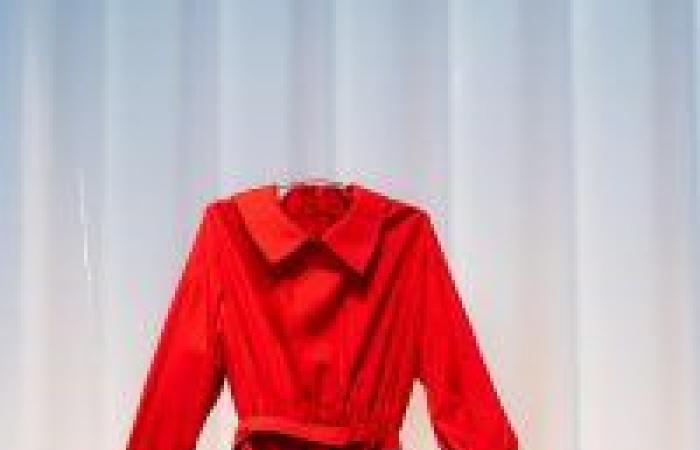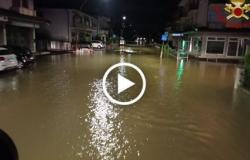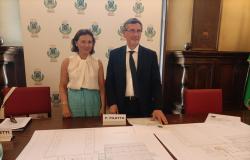PESARO – Already at the center of Focus at the Pesaro New Cinema Festival in 2022, Anna Marziano (here is the official website) returns to the competition with Becoming seed, a 10-minute work of which she is the author in every way, from writing to editing. The Italian artist, who prefers film, 8 mm and 16 mm, offers us fragments of vision following the idea of blood in its complexity as a common thread. “Years ago I intended to compose moving images of everything that germinates, sparkles, opens. It was a film linked to élan vital in all its forms, linked, I imagine, to the arrival of my thirties. Over time I think the atmosphere of this project has eroded. Becoming a seed is silent. Silent like the plants that surround us… Silent like the seeds that I started collecting in the places where I happened to walk.”
Marziano has Sicilian, Venetian and English origins, “I travel between Catania, Padua and Berlin and I feel like a citizen of the world”, she says of herself. Artist residencies were fundamental in his career, including the one in Geneva with Utopiana, which allowed him to develop the project Becoming seed.
It has a very close relationship with the Pesaro Exhibition.
Yes, I appreciate the programmers who take care of the competition and the focus on the artists also because here there is an absence of categories, the works are accepted regardless of duration and format. Furthermore, it is a festival open to the public, there are no tickets. So it combines avant-garde and spectators.
Becoming seed with its ten minutes it is in competition alongside Direct Action which lasts 216.
We cannot judge a book by the number of pages and I have always fought for freedom of formats, a freedom that is allowed here in Pesaro.
His film shows the connection between humans and the plant world. How did you work on this aspect?
The film is an attempt to work on alliances between various forms of living things. As between individual human beings, there is also a relationship between life forms. Blood donation expresses the violence and impact of reality, the frightening elements of life and living, but it is also a brute form of goodness, without falling into rhetoric. A way of coping with the violence of existence. The film has continuous camera movements, the only static images are those of the blood bags and the collection of seeds.
The hand that collects the seed belongs to an elderly person. Is there also a feeling of transmission of life and experience that goes beyond the biology of procreation?
“Becoming a seed” concerns all ages and should be explored by everyone. But it is true that seeds are not necessarily procreation. There are many ways of giving of yourself and contributing to the world.
The Life by Marina Abramovic
His film made me think of the work of Marina Abramovic The Lifewhich in recent days was on display at the Pescheria Centro Arti Visive in Pesaro, both for the anniversary of the color red and for the exploration of the themes of permanence and impermanence.
Permanence and impermanence interest me a lot. Red, in my work, refers to menstrual blood and venous blood. Blood carries within itself the duplicity of generation and violence, vital energy but also destructive power. I respond to this ambivalence with a relational ontology. But we must not deny the impact of the power of life. Red has always had this ambivalence, both in accompanying the dead and in moments of joy, as in Chinese culture. I worked with pigments, directly on the film, the rubia tinctorum which is a root and has cellular components and an organic appearance, and red ocher or hematite collected near Padua where I live.
There is certainly a pictorial aspect in this reworking of the film with other materials and pigments.
Yes, and it is also in tune with an ecological theme. I’m very attached to film because of the heat it can transmit and because it tracks light, but film involves the use of chemicals. Not that digital is eco-friendly either fairtrade, also because it is connected to overproduction. I seek intimacy with the film, but I shoot as much as necessary and then paint the support.
She trained at the Experimental Center.
I have a composite education, I studied political science and philosophy, then photography, already as a child I developed with my father. Then at the CSC with Giuseppe Rotunno and Beppe Lanci who had a strong relationship with the film. My aunt was in choreography, so I was also involved in the dance world.
What is cinema for you?
I love cinema as an adventure and as a path of research. It would be easier to settle into formats and conventions. But I have always mixed cinema, documentary, arts. In Fresnoy, where I studied, I interacted with artists who came from all over the world, in particular from the USA and Canada where experimental cinema is strong and people work directly on film.
Do you have a new project?
Yes, I am in the process of collecting materials. I have the support of the Berlin-based Harun Farocki Institute.
She is a producer, director, photographer, editor of your films. In particular, how do you work productively?
It’s like being a writer. You get the idea, proceed by sober means. It’s a choice of independence.






